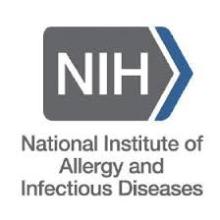The goal of this project is to examine the feasibility of developing an HIV transmission model for use in local HIV prevention planning for heterosexuals. Advances in HIV treatment and prevention have changed the intervention policy landscape, and public health departments in the US are now tasked with determining which combination of treatment and prevention strategies will have the greatest impact. Epidemic modeling is a valuable resource for this type of comprehensive HIV prevention planning. However, these models are often parameterized with a combination of data from multiple populations. As a result they are not rooted in, or representative of, a local epidemic, even though treatment and prevention strategies are designed mostly at state and local levels in the U.S. This project seeks to bring the modeling closer to the decision making: to create robust, modifiable and accessible modeling tools for HIV transmission dynamics at the state and local level that will support HIV prevention planning activities. Seattle/King County is an ideal setting for this pilot project because it has a robust HIV treatment and prevention program, the Governor has set a goal of reducing incidence by 50% by 2020, there is a strong team of epidemic modelers at the University of Washington (UW), and there is long history of collaboration between the UW, the state (WA DoH), and Public Health Seattle King County (PHSKC). The UW and local health departments have a history of working together to design local prevention initiatives and the UW CFAR currently supports a collaborative project adapting a model of MSM HIV transmission dynamics from an Emory/UW/CDC project to Seattle and WA State. Building a similar model for heterosexual HIV prevention planning has been identified as a priority by the new Director of the Washington State Department of Health Infectious Disease Office, Claudia Catastini. Heterosexuals account for ~25% of HIV incidence in the U.S. and 10-15% in WA State, with significant disparities by race. Adapting the Atlanta MSM model to represent a heterosexual population is a non-trivial effort – both the model structure and the data sources are different. The purpose of this project is to conduct a thorough and systematic review the data that are locally available and to develop and validate a model prototype, working closely with our partners in the local and state Public Health departments. Our specific aims are to: (1) Develop a prototype stochastic network epidemic model for heterosexual populations, (2) Parameterize the model using local data and conduct a preliminary assessment of the validity of the simulations (3) Work with our public health partners to identify data gaps and opportunities for data collection. If this project demonstrates feasibility, it will establish the rationale for public health investments to collect additional data if necessary, and an R01 level proposal to build out the code for a full working model.
